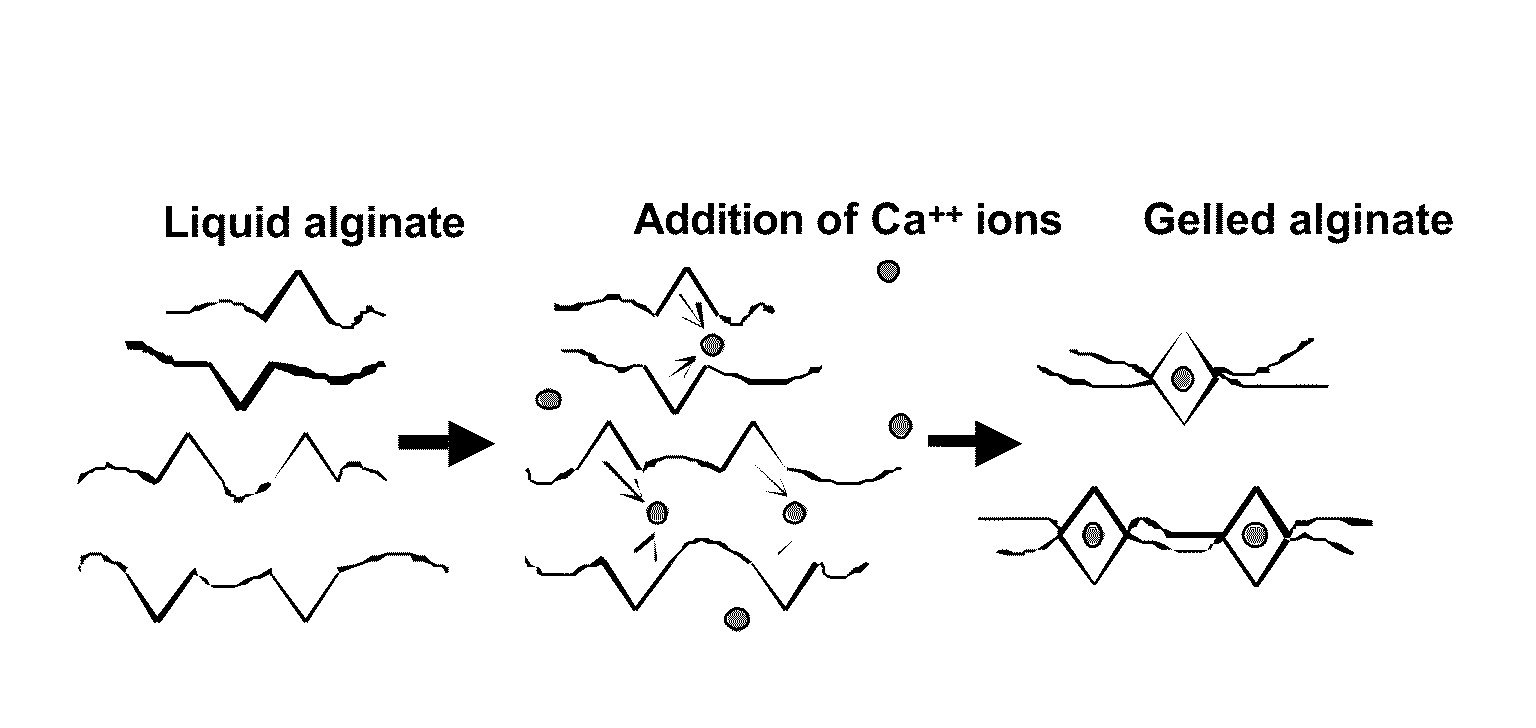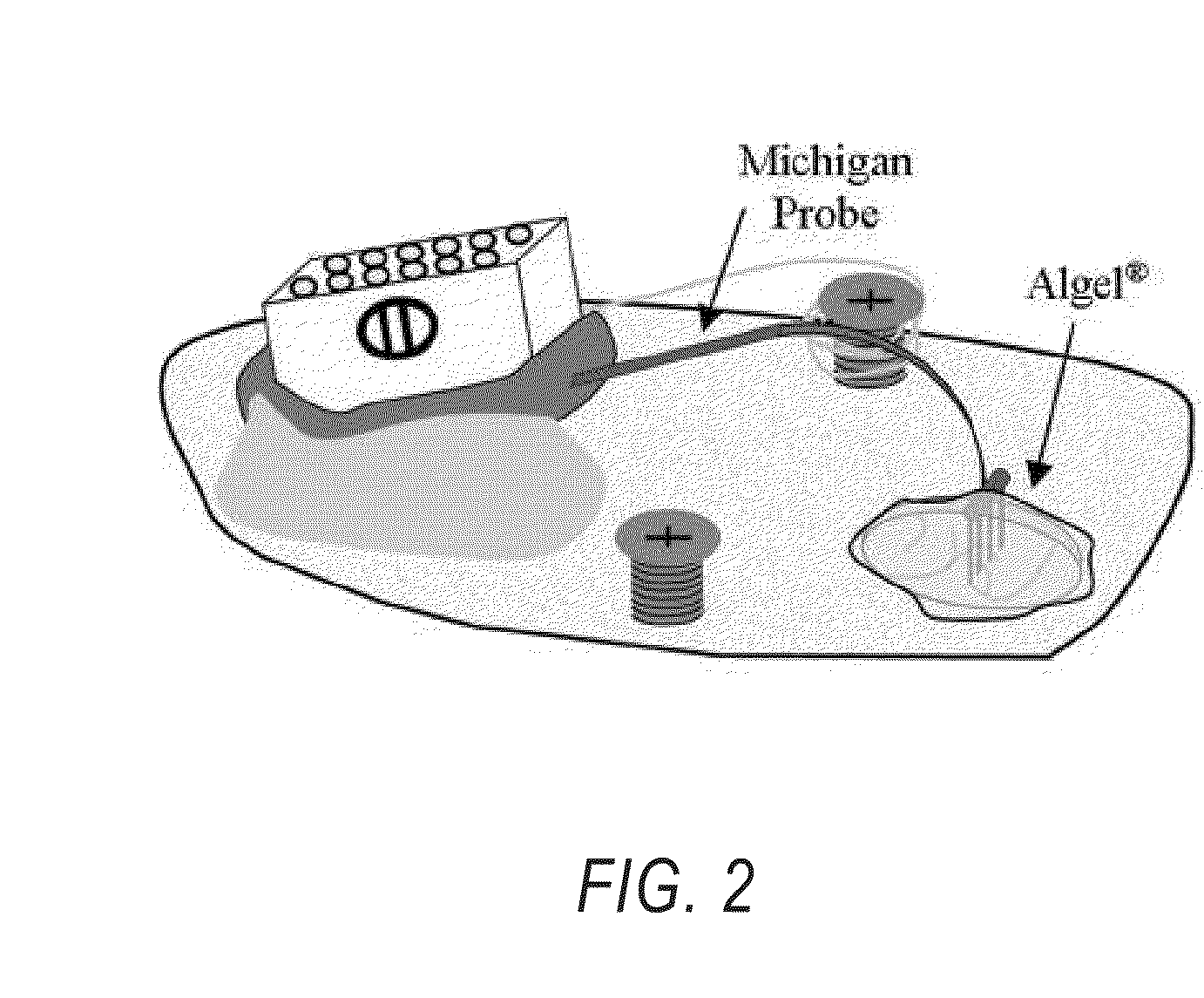Compositions and methods for use of alginate dural sealants
a technology of dural sealant and composition, which is applied in the field of compositions and methods for the use of dural sealant, can solve the problems of affecting the sealing effect of the dural sealant, so as to inhibit the regrowth of the dural, the dural sealant is transparent and the application time is long
- Summary
- Abstract
- Description
- Claims
- Application Information
AI Technical Summary
Benefits of technology
Problems solved by technology
Method used
Image
Examples
examples
[0037]Twenty-five Sprague Dawley Rats were evaluated each weighing approximately 300 grams at the time of surgery. Craniotomy locations spanned three different areas of the cortex: auditory, barrel, and motor cortex. Anesthesia was administered using intra-peritoneal injections of an anesthetic cocktail (comprised of Ketamine, Xylazine, and Acepromazine, each with concentrations of 100 mg / ml and a respective mixing ratio of 5:0.5:1). The initial dosage used was 1.5 ml / 100 g body weight. This was followed by regular supplements of pure Ketamine (¼ the initial volume injected) every 60 minutes or as needed to maintain the animal in an areflexive state. Craniotomies were instituted according to techniques know in the art. The craniotomies created were rectangular in shape spanning approximately 3 mm in the anterior-posterior direction, and 2 mm in the medial-lateral direction. The electrodes were hand-inserted, and calcium alginate was applied.
[0038]FIG. 2 illustrates a typical surgica...
PUM
| Property | Measurement | Unit |
|---|---|---|
| viscosity | aaaaa | aaaaa |
| fatigue strength | aaaaa | aaaaa |
| concentrations | aaaaa | aaaaa |
Abstract
Description
Claims
Application Information
 Login to View More
Login to View More - R&D
- Intellectual Property
- Life Sciences
- Materials
- Tech Scout
- Unparalleled Data Quality
- Higher Quality Content
- 60% Fewer Hallucinations
Browse by: Latest US Patents, China's latest patents, Technical Efficacy Thesaurus, Application Domain, Technology Topic, Popular Technical Reports.
© 2025 PatSnap. All rights reserved.Legal|Privacy policy|Modern Slavery Act Transparency Statement|Sitemap|About US| Contact US: help@patsnap.com



